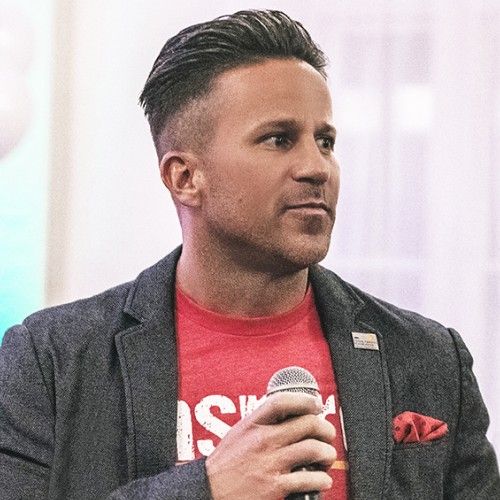The rapid evolution of digital technology is making digital literacy a necessity for managers. To effectively direct their organizations through these digital transformations, managers must be well-versed in a multitude of technologies and encourage their teams to adapt as well. Digital literacy is effective in remaining competitive, making informed decisions, and innovating.
Digital literacy is the ability to understand several digital mediums and effectively communicate ideas through them. To benefit from digital literacy, it is important for managers to not only be able to understand, navigate, and communicate information digitally, but they must also be familiar with advanced technologies and recognize important digital trends that are applicable to their organization.
Here are some key components of digital literacy that are applicable to managers:
- Technology Proficiency
Managers need to be comfortable navigating basic computer applications as well as more advanced software. Utilizing software such as Microsoft Office, data analytics software, and communication software is beneficial for all executives to use their time effectively. Familiarity with more industry-specific software is crucial for managers as well because they can have a better understanding of the resources their reports are using.
2. Information Management
When considering digital literacy, information management is a priority because it focuses on the ability to manage, organize, and access digital information. Executives handle copious amounts of information so the ability to manage the information can help reduce inefficiencies. A strong understanding of cloud storage and file management systems can assist in best-managing information.
3. Cybersecurity Awareness
It is specifically important for executives to prioritize digital literacy for its cybersecurity implications. Being conscious of potential security threats and ways to reduce them can protect sensitive company and customer data. Cybersecurity isn’t solely comprised of security software, it can also be practiced through developing habits such as updating passwords and avoiding suspicious online activity.
4. Digital Adaptability
The digital landscape is constantly evolving, so managers need to be adaptable and willing to learn. New technologies and innovations emerge rapidly and can serve as beneficial tools to improve company practices. Executives should be aware of developments and consider the technological applications to the company.
5. Data Analysis
Managers must possess abilities to interpret data effectively. When approached with information, executives must have strong analytical skills to examine information and make informed decisions. To develop a complete understanding of data and develop meaningful insights, executives must be familiar with data analytics tools and statistical analysis.
6. Social Media Understanding
Social media has become a significant part of the digital space and can serve a variety of purposes for businesses. Marketing and networking are great uses of social media in the business world and it is important for executives to understand how to leverage these different platforms. The use of social media can enhance an organization's brand and customer reach. It is also important for executives to be aware of issues that arise within social media when considering interactions with customers and the public as a whole.
Developing these components of digital literacy can enhance productivity, create more effective communication, improve decision-making, and create a competitive advantage. Through more efficient uses of time, companies may experience cost reductions as well.
Strong digital literacy skills are increasingly important when preparing for future technological advancements. When large changes occur in the technology space, it can be difficult to catch up for users who haven’t remained up to date with other innovations.
To ensure a wide breadth of knowledge on digital technology, these are some software tools managers can familiarize themselves with:
- Microsoft office suite
Within Microsoft Office Suite, there is a collection of software including Word, Excel, PowerPoint, and Outlook. Word and PowerPoint are tools for document creation and presentation. A strong familiarity with these softwares is beneficial for effectively communicating information across a variety of formats. Excel is a spreadsheet editor that calculates and computes data. Complex functions such as graphing, pivot tables, and macro programming can help to transform, analyze, and articulate data ultimately to aid in the decision-making process. Outlook is an essential tool for communication and management of personal information.
- Project management tools
Project management tools are helpful for overseeing and coordinating team efforts. These platforms can help managers plan, allocate resources, coordinate efforts, track progress, and prioritize tasks. Project management software is particularly useful for teams collaborating remotely. Some of these tools include Asana, Trello, or Microsoft Project.
- Performance Management Software
Tools to monitor direct reports are incredibly valuable tools to track performance and navigate challenges. Software such as AIM Insights can allow managers to set goals with their direct reports and track progress to ensure continued success. Performance management software can also allow managers to gain insights into the sentiments of their direct reports to help improve team functionality.
- Business Intelligence Tools
Tools like Tableau, Power BI, and QlikView can be used to analyze data and convert it into actionable information. Executives can utilize these tools to compile data and create dashboards, reports, and visualizations. Business intelligence tools are beneficial for creating predictions and analyzing potential outcomes.
- Communication Software
Executives can use platforms such as Slack, Microsoft Teams, and Zoom to facilitate meetings, schedule meetings, share documents, and manage files. These platforms have tools that can automate routine tasks to allow managers to use their time more efficiently. For example, Zoom provides a transcription feature to allow meetings to be documented.
- Artificial Intelligence (AI)
AI is rapidly transforming the business landscape and executives should familiarize themselves with it due to its multitude of applications. Natural Language Processing Tools can automate content creation, answer customer inquiries, and assist with analysis through the generation of written content. AI chatbots are another development that can improve the customer service experience for companies by allowing consistent interaction with customers. There are various other applications of AI through predictive analytics, applications to recruitment processes, and even personal schedule management.
- Customer Management Software
Maintaining healthy customer relationships is important for companies and customer management software can help streamline these interactions. Software such as Salesforce, HubSpot, and Zoho helps executives to manage these relationships and gain insights into customer preferences. The utilization of customer relationship management software can allow executives to make informed decisions on their marketing strategies and be effective with their resources.
Depending on their responsibilities, not all executives may need to have in-depth knowledge of these softwares. However, it is important to have a basic understanding of the softwares features and how they can be used to increase productivity and minimize the time required to complete different functions.
Digital literacy provides a lot of benefits to executives, however, there is some barriers executives experience. Resistance to change is a main contributing factor to executives failing to improve their digital literacy. Resistance to change primarily arises when executives are comfortable with their current practices and see no benefit from spending time learning new software. It is important for these managers to consider the added benefit of the new innovations and potential future time savings from using updated technology.
The digital landscape is constantly evolving and leading to new innovations that can assist executives. Executives should continue to follow new innovations within the digital space and consider the positive implications of implementing new technologies within their companies.




































































